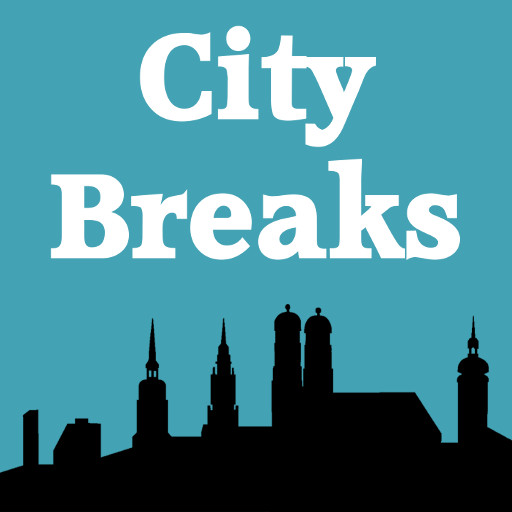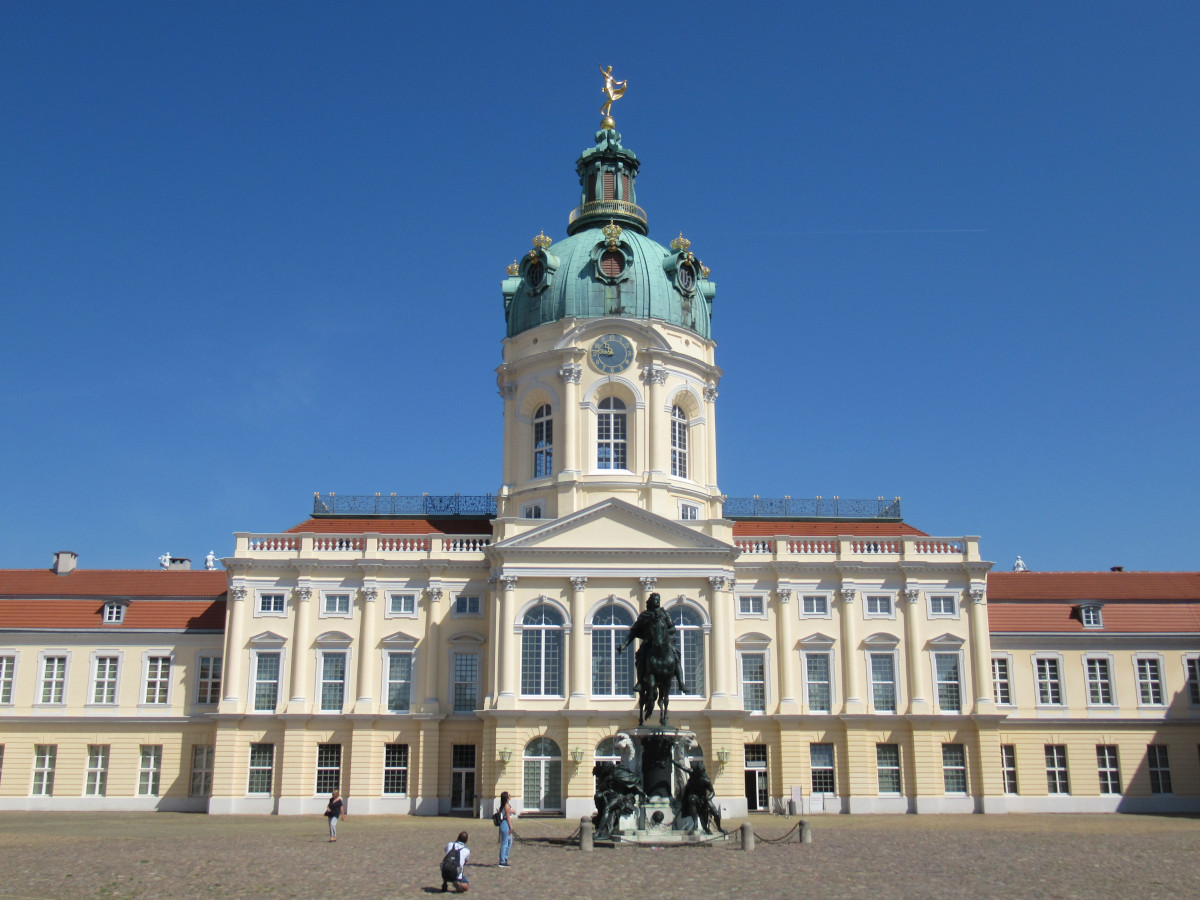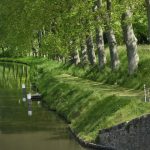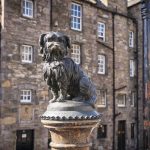The Palace of Charlottenburg, the former summer palace of the Hohenzollern family who ruled Prussia for five centuries until 1918, is in the west of the city, a ten minute walk from the Sophie-Charlotte-Platz stop on the U2 underground line. This post covers things to look out for at Charlottenburg and stories about three of its most interesting past residents.
Charlottenburg: A Little History
Charlottenburg was built as a summer palace in 1699 as a wedding gift from the Elector of Brandenburg to his new wife, Sophie Charlotte. Generations of the Hohenzollern family used it until the mid-19th century when, with the advent of the German Empire in 1871, a royal palace began to seem less in keeping with the times. Its 20th century history is quite predictable: bombed by the RAF during World War 2, it was later restored and taken over by the state and opened to tourists. Today there’s lots to see: the original palace, Frederick the Great’s New Wing and and the lovely grounds.
Sophie Charlotte and the Old Palace
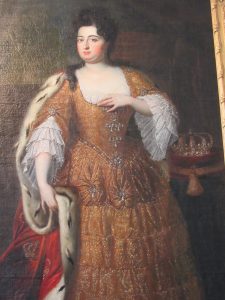
Beautiful, musical Sophie Charlotte spoke four languages fluently and loved to debate with the philosophers of her day. It’s said that Adolph Menzel wrote a whole book in answer to one of her philosophical questions to him. Her ‘Court of the Muses’ was a lively place, where parties, balls, garden festivals and masquerades were enjoyed and when Sophie died of influenza at the age of only 36 it was said that ‘the lights went out on the cultural life at the palace.’ After her death, her husband, now Frederick the First, King of Prussia, renamed the palace Charlottenburg in her memory.
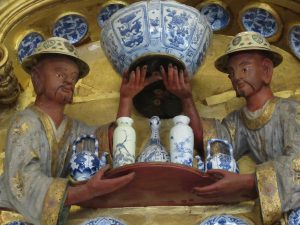
The Old Palace – called the Altes Schloss in German – is the part where they lived. You can walk through the rooms they used, both state and private. The Red Chamber is imposing – think heavy red damask and gold braiding and look out for the Prussian eagles all around the base of the room. In the Golden Cabinet Room you can see Sophie Charlotte’s lacquered writing desk, decorated in the chinoiserie style popular in the early 18th century. But the room likely to make the biggest impression is the Porcelain Cabinet Room, dripping with golden decorations and crammed floor to ceiling with porcelain displays.
Look out for the paintings too. The portrait of Sophie Charlotte is described in the guidebook as showcasing her ‘big, gentle eyes and wonderfully thick black hair.’ There’s an eye-catching work called ‘Three Kings’, showing Frederick with two royal visitors from Saxony and Denmark, all in a circle holding hands, as if just about to perform a children’s nursery rhyme. The golden frames of Frederick and Sophie-Charlottes crowns are on display, minus their original jewels which have been lost, as is a gold sceptre whose magnificent ruby centrepiece was gifted by Tsar Peter I of Russia.
Frederick the Great and the New Wing
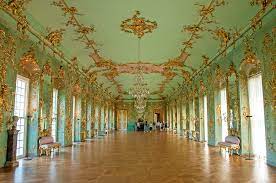
The day after his father’s death, when Frederick became King of Prussia, he went straight to Charlottenburg and just weeks later he commissioned an architect to build a lavish new wing. Curiously, he soon decided he preferred his other palace, Sanssouci at Potsdam and was rarely at Charlottenburg, but the buildings which he had built are magnificent. Most sumptuous of all is the Golden Gallery, a 42m long ballroom, and a close second is the Silver Vault, full of long tables displaying some of Frederick’s 100+ porcelain dinner services. His library is an elegant room lined with marble busts, his concert room was used by visiting musicians and by Frederick, a talented flautist, himself.
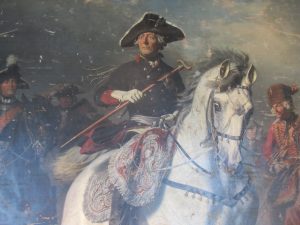
Take a look at Frederick’s many paintings and his collection of over 300 snuff boxes, including the Charlottenburg Golden Snuff Box with its diamond-encrusted lid and miniature portrait of him. Muse too about Frederick’s wife Elisabeth, from whom he was largely estranged and for whom he built a separate palace at Schönhausen in the north of the city, so he would not have to see her. On meeting her for the first time in six years, he is said to have greeted her with the comment ‘Madame has grown fat’. But she lived on as dowager queen for ten years after his death and played an influential part in court life.
Luise and the Mausoleum
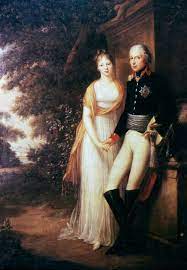
In 1793, Friedrich Wilhelm III married the young and very beautiful Luise, Duchess of Mecklenburg Strelitz and she soon became the darling of the court. She is said to have kissed a child in the crowds welcoming her into Berlin, which was against protocol, but which prompted an onlooker to write: ‘The arrival of the angelic princess spreads over these days a noble splendour’. Luise and Friedrich Wilhelm had nine children and ran a cheerful, welcoming court at Charlottenburg. Luise involved herself in court matters, even touring Prussia with her husband, which was unusual for the time. After Prussia’s defeat in 1806 she negotiated personally with Napoleon, prompting him to remark that she was ‘the only real man in Prussia.’ When she died unexpectedly in 1810, the distraught Friedrich Wilhelm had a mausoleum built for her in the palace gardens.
The Palace Grounds
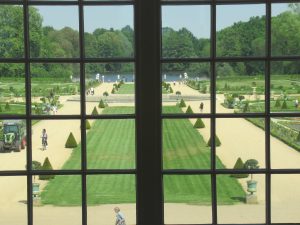
Don’t miss these, they are a highlight. Formal gardens behind the palace give way to less formal grounds, stretching down the bank of the River Spree and comprising woodland, a carp lake, meandering paths, the occasional statue and three buildings of note: the Mausoleum, the New Pavilion and the Belvedere.
Inside the much-visited Mausoleum is Sophie-Charlotte’s tomb, topped by a beautiful marble figure of her, seemingly sleeping peacefully. Her husband, who died thirty years after her, is buried beside her. After fourteen years of widowhood, he married again and that prompted him to have the New Pavilion, an elegant little building in the Italian style, built in the grounds as a retreat for him and his new wife, Augusta von Harrach. Inside are portraits of the two of them, and a collection of paintings, including works by Karl Friedrich Schinkel and Caspar David Friedrich. Thirdly, there is the pretty little Belvedere, a rococo-style three storey building with a cupola, built for Friedrich Wilhelm II who wanted somewhere to relax and look out over his lands.
Listen to the podcast
Suggested Reading
Frederick the Great: King of Prussia by Tim Blanning
Useful links
The Old Palace of Charlottenburg
The Palace of Charlottenburg New Wing
The Palace of Charlottenburg New Pavilion
The Palace of Charlottenburg Belvedere
The Palace of Charlottenburg Mausoleum
The Palace of Charlottenburg Gardens
Last Updated on July 20, 2024 by Marian Jones
